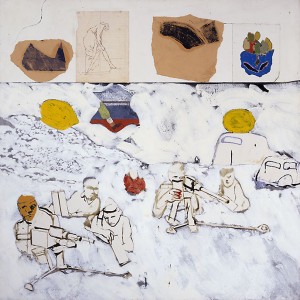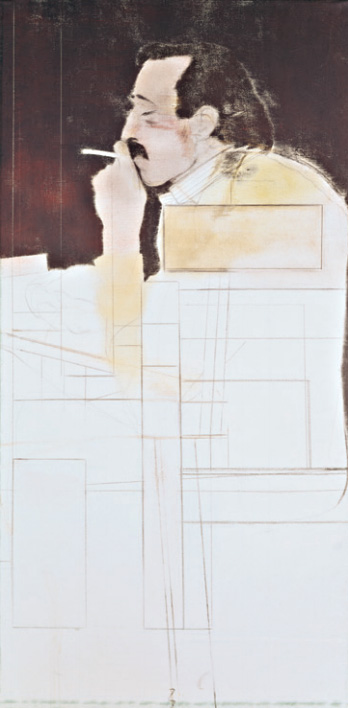A few years ago during a summer spent in Catalonia, I strolled through the port city of Sant Feliu de Guíxols. It is a special place: it was spared the transgressions of the Spanish coast’s building mania due to its fishing industry. It is not merely decorative but in fact successful in a particular industrial branch: producing cork. And here – nominally part of Spain but somehow a place all of its own – R.B. Kitaj and his wife spent the winter of 1953/54. Twenty years later, he bought a house in this town. What did it mean to him, this stubborn region that again and again rebelled against Spanish supremacy?
Kitaj called Catalonia a “beacon for the slumbering Jewishness in me, that awake would become a torrent.” His friendship with a Catalan cork manufacturer Josep Vicente Roma – “slender with an aquiline nose, mustached and socialist and nimble and quick-witted”
– was an inspiration and kind of home for him. Catalonia left many traces in his paintings: for instance, in “The Hispanist” or “Kennst Du das Land?” The land and the culture had symbolic meaning and become places of longing: “Catalonia, that played a part in inspiring me to become this strange Jew, perhaps the first Jew who wanted to unleash a new Jewish art.”
Martina Lüdicke, Exhibitions


